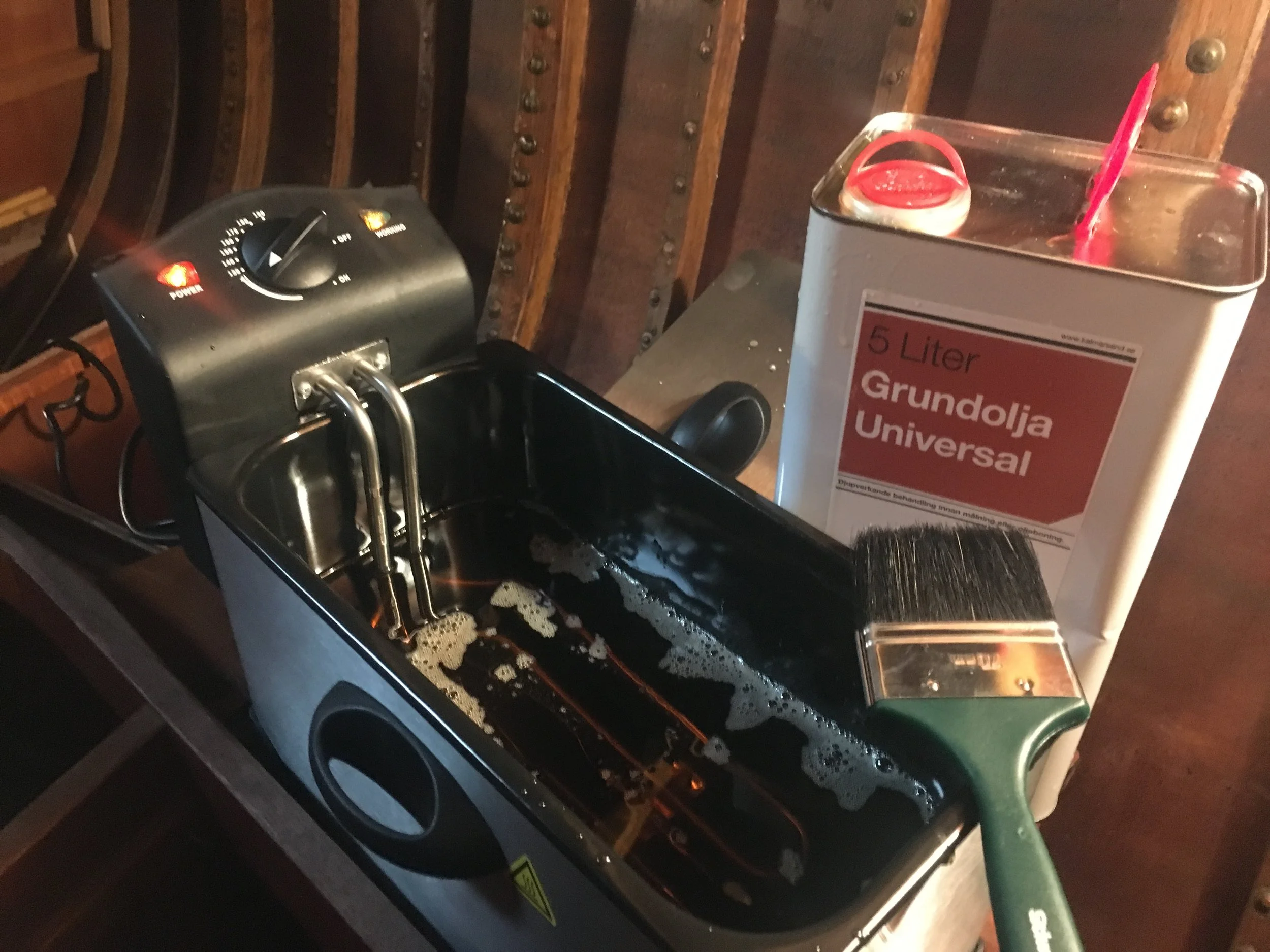Oiled and clean
Having now access to the whole hull inside - and having it clean - I could properly take care of wood.
Cold-pressed linseed oil was warmed-up to 120 degrees C and applied methodically on all elements: planks, floors, frames, deck (underside). The result is stunning!
At this point I’ve decided to not put back ceiling into the boat. Why would I want to cover all these beautiful structures? I mean - would you put covers onto frames and arches inside the cathedral?
I suppose that when wooden boats were mainstream all this was considered just a construction: necessity but not particularly eye pleasing. Hence boatbuilders were covering their work with nice wooden panels to make the interior more home-like. Even on work boats. That added, supposedly, a sense of yachty interior - where all you could see was stylish furniture, keeping the construction details hidden from the eye.
A lot has changed since then. Our mainstream boats - GRP laminates - are mostly made in industrial process of moulding. The resulting shell is not particularly nice nor friendly inside so interior panels and furniture are hiding it. Having renovated laminate boat I still have nightmares of sailing in sewer pipe.
Even after I built interior panels on Motoko, trimmed with exotic wood and nice interior features I still knew that behind my work there is this ugly, smelly plastic hull which I’ve just covered. I could not shake it out.
On Meritaten, in contrast, the hull is beautiful. Every detail of it shows craftsmanship and hand work which took many months. All materials are noble: mahogny, oak, copper, varnish, oil. All structures bare a thought of the designer and builder. It’s a masterpiece of human ingenuity in use of organic, living material to serve a sailor in hostile, always changing marine environment. Joints are made in a way that they are strong yet flexible, allowing wood to move with expansion and contraction without breaking.
I feel pleasure studying it when I lie on my berth and look up and around me. It makes me feel good. Why should I cover it again?
Apart from aesthetic reasons there are two purely practical:
I have direct access to the hull in case something happens - like collision or leak
It is easier to keep it clean - I don’t want to repeat the whole horror of removing the ceiling and cleaning behind it
And last but not least - these removed panels constitute about 50kg of wood, placed above water line. Not good. They are not coming back.
Well, parts will: I’ll use this wood in coming restorations and in building navigational table - so nothing will be wasted. It’s a beautiful mahogny, after all.



